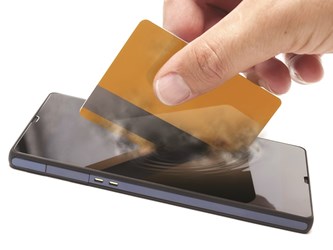Mobile Payment Landscape Changing
By Brianna Ahearn, contributing writer

Survey results released last month show that interest in mobile payment options are increasing, with 25% of smartphone owners in the survey indicating they were likely to use a mobile payment app. In the post-Apple Pay world, consumers have a lot of choices at the checkout, and the landscape is changing. Companies like Google have to find ways to compete with Apple Pay, while brands like Samsung work to develop their own technology for the option. This leads to a competitive market, where companies need to offer the newest and best features.
New Changes for Apple Pay
Apple Pay will soon integrate with retail loyalty programs, an Apple press release says. Walgreens will let their more than 80 million Balance Rewards members use their rewards with Apple Pay, and Kohl's will roll out Apple Pay to 30 million Yes2You Reward members. The other brands and retailers offering a similar integration option are Coca-Cola, Dunkin' Donuts and Panera. Your device will recognize the store you're in, and automatically present the card at the checkout.
Since its initial launch in September 2014, Apple Pay has grown significantly. 2,500 banks currently support Apple Pay, and Discover will join this fall, bringing the total number of participating credit card companies to four. At the company's developers' conference on June 8, Apple announced several new changes to Apple Pay. Where Apple Pay once was accepted only at big box retailers, their new update changes the way people can use the service. A new Apple Pay reader built by Square will let small business providers take Apple Pay. Now everyone from farmers markets to day care providers can take Apple Pay, after the devices release in the fall. What does this mean? Mobile payments just became a lot more mobile.
“Apple Pay has kicked off a new era of payments and our users love the incredibly easy, secure and private way to pay. We’re bringing our customers the most requested features with support for rewards and store-issued cards, and expanding how and where Apple Pay is accepted, which truly transforms the way people pay,” says Eddy Cue, Apple’s senior vice president of Internet Software and Services.
Google is Still in the Fight, Plans Android Pay
Google is not giving up the fight for mobile payment users. After its Wallet failed, Google acquired the technology of SoftCard, a digital wallet company, in February. SoftCard was developed by mobile carriers AT&T, T-Mobile and Verizon, and operated with NFC technology. After Google acquired the technology, it folded the existing SoftCard users into Google Wallet, but is preparing to launch their new mobile payment service, Android Pay. Details released in May show that the service can be used for in-store payments and on third-party apps, with over 70,000 stores accepting the service. All four major credit cards will be available with Android Pay. News headlines recently announced that Google won't reap a big financial benefit, however, as they won't be receiving the transaction fee from credit card companies.
CurrentC, the Retail World's Attempt to Fight Fees
The fate of CurrentC, the result of a consortium of retailers fighting back against credit card processing fees, is uncertain. Retail analysts see the writing on the wall as one prominent member of the consortium, Walmart, signs on to accept Apple Pay. Best Buy, also a member, is working with Apple Pay as well. CurrentC uses a secure generated barcode scanned at checkout for payment, but the shift in mobile payments is leaning towards NFC (near-field communication) technology. The fact that its founding members are opting into Apple Pay might not be good news for CurrentC.
The World of Wearable Payments
Mobile payments aren't just in a phone, they'll soon be on your wrist. Apple's Watch will soon hit retail stores later this month, and the high-tech accessory comes outfitted with Apple Pay. However, Apple isn't the only company developing payment options for their wearable technology. A Reuters report claims that Korean electronics firm Samsung plans to add a mobile payment option in their upcoming smartwatch. The mobile payment option, Samsung Pay, will use NFC technology like Apple Pay. The report states that Samsung Pay will be available for “select partners” in July. Samsung has been gearing up to take on Apple with Samsung Pay, as Google and Apple battle for consumers' attention. Samsung Pay was scheduled for launch this summer but has now been delayed until September. Reports state that Samsung Pay will only work with their new model devices, the Galaxy 6 and Galaxy 6 Edge; no support for older devices has been announced. Paypal is also looking into the option.
Will mobile payments extend beyond retailers? It's likely. A credit union in Canada, First West Credit Union, has just developed its own contactless wearable payment option using Visa payWave. Visa payWave is a quick checkout option for payment that lets you wave an eligible card (or now, your wrist) over a reader. The Visa payWave reader is common in stores like Walgreens and even on vending machines. When it comes to paying for groceries, home goods, and other consumer products, it might not be just about pulling out a card, but pulling out your phone or waving your wrist. The only question is, who will dominate the industry? The data points to Apple Pay, but Samsung, Google and PayPal might not be not be far behind.
